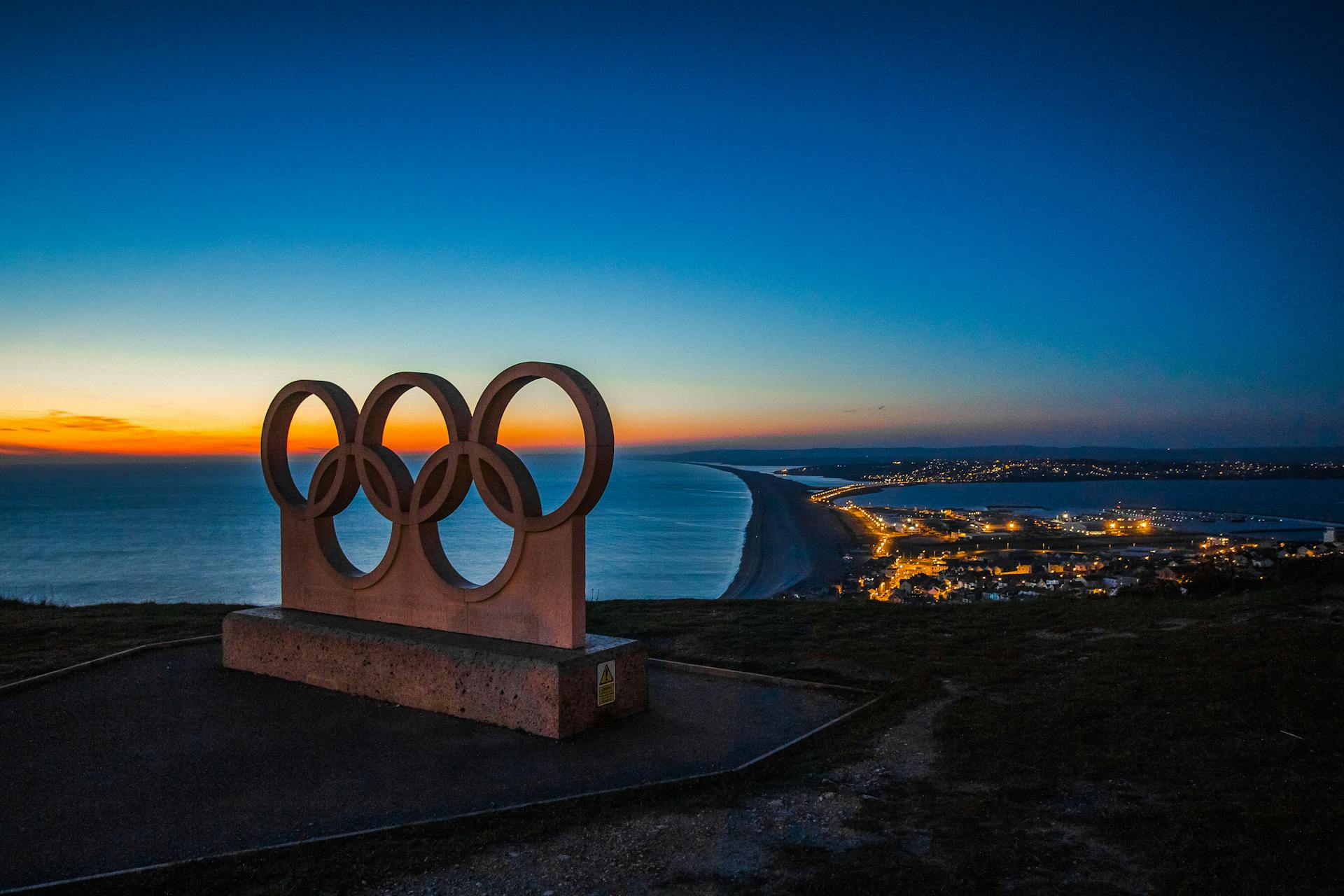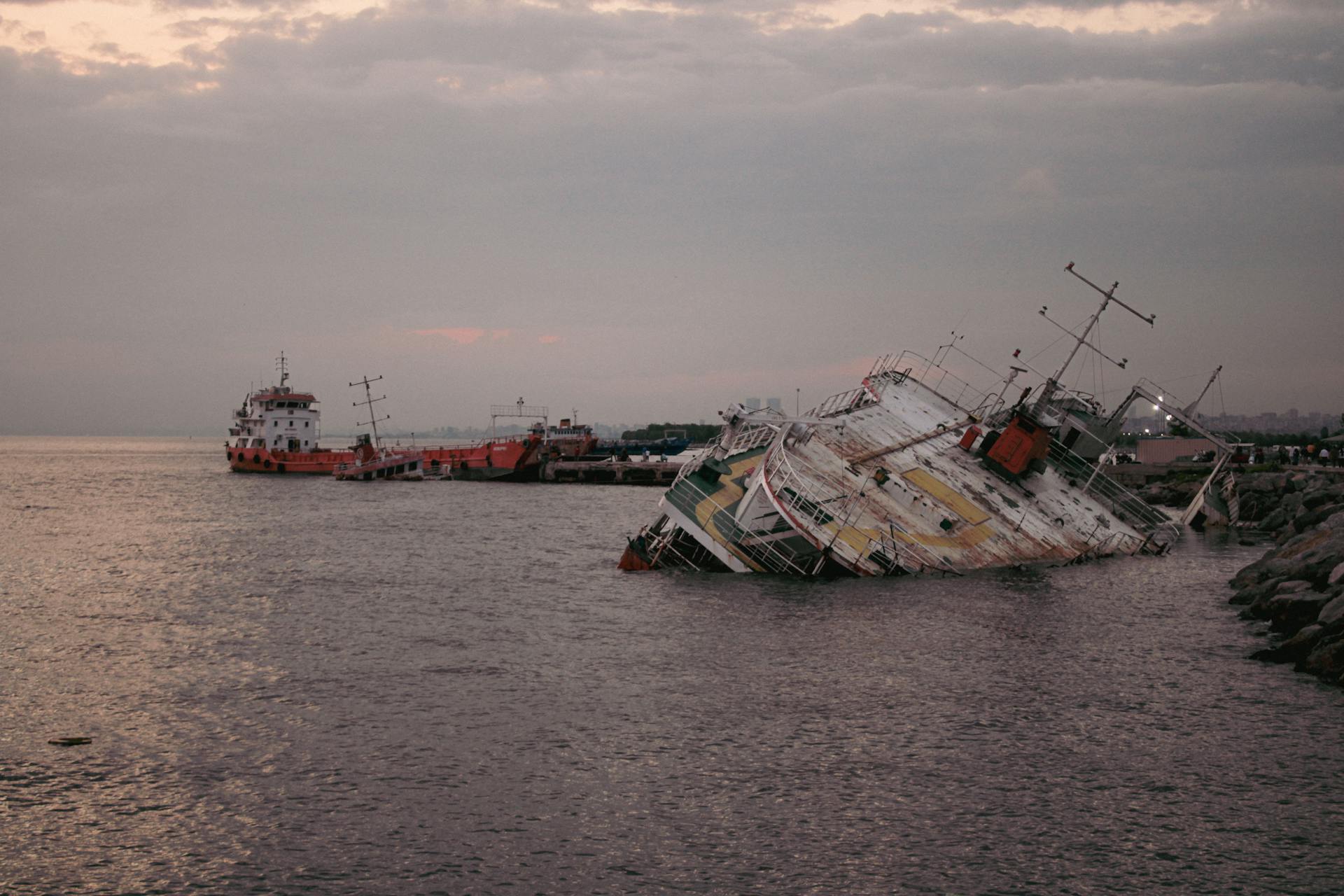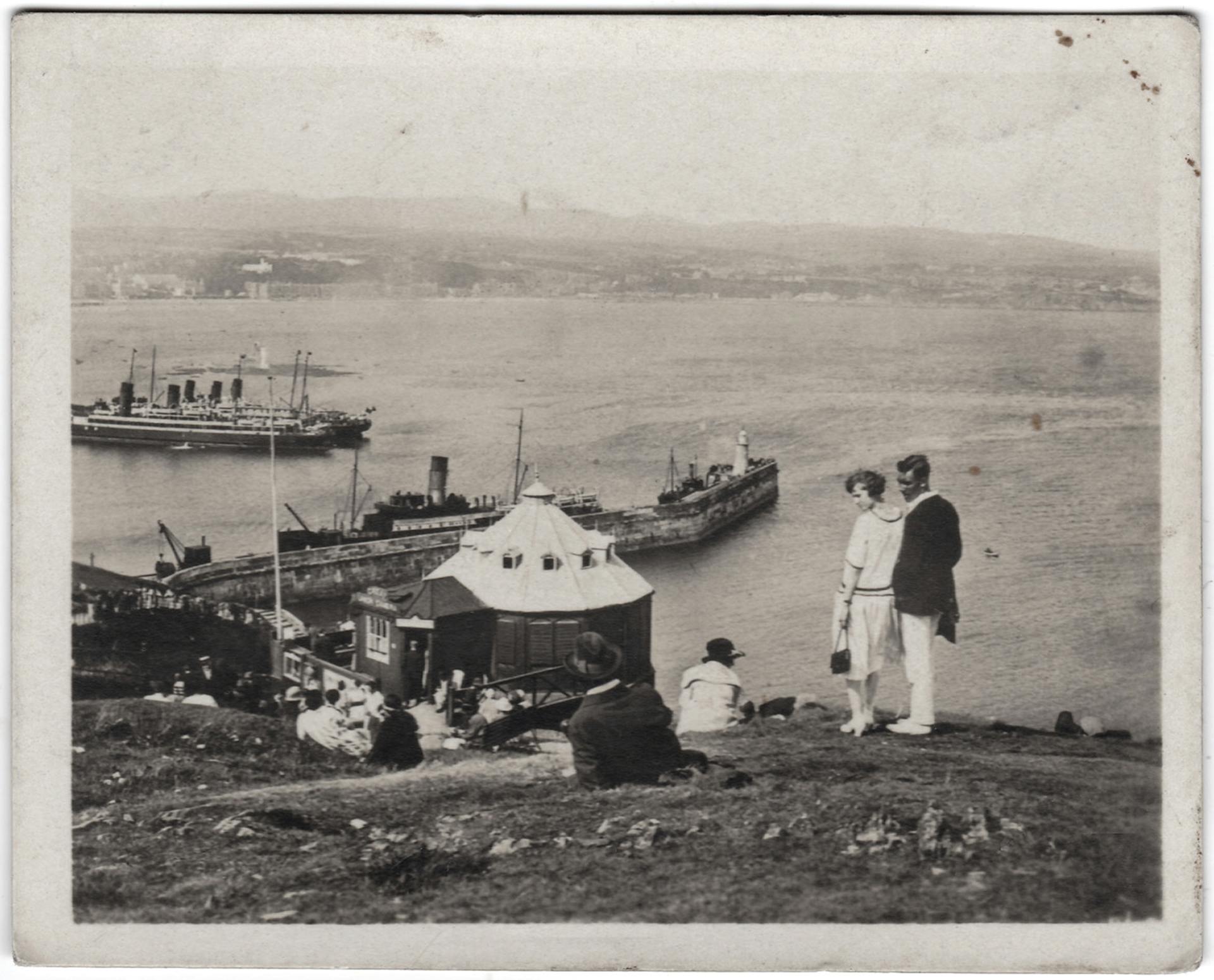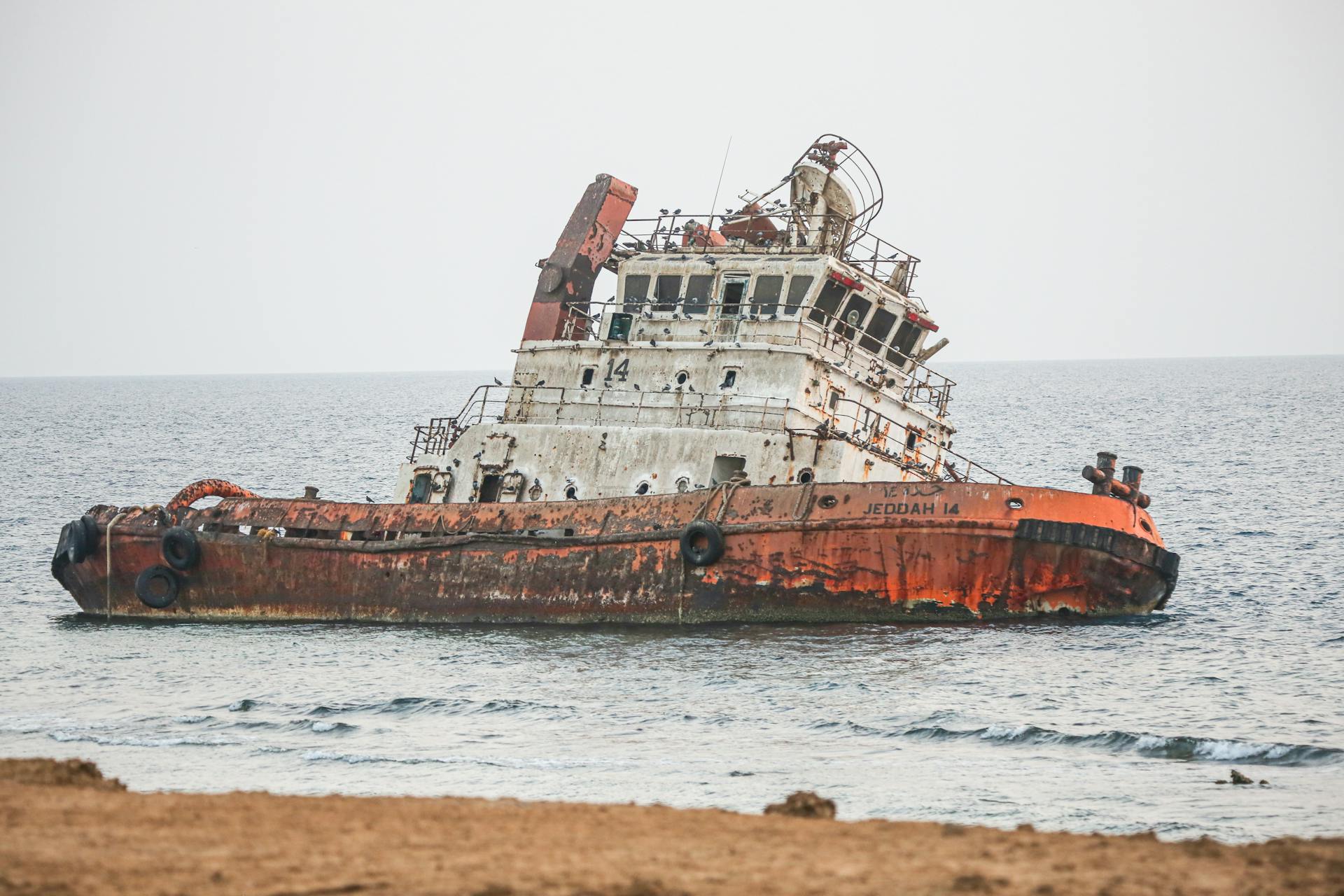
The RMS Titanic, Olympic, and Britannic were three sister ships built by the Harland and Wolff shipyard in Belfast. These iconic vessels were the largest ships in the world at the time, measuring over 882 feet in length.
The Olympic was the lead ship of the trio, launched in 1910, followed by the Titanic in 1912, and finally the Britannic in 1914. Each ship was designed to be a masterpiece of engineering and luxury, catering to the needs of the wealthy and elite.
The Titanic was the most famous of the three, tragically sinking on its maiden voyage in 1912, resulting in the loss of over 1,500 lives.
The Titanic and Its Sisters
The RMS Titanic was not a solo project, but rather one of three sister ships built by the White Star Line. The Titanic was launched on 31 May 1911, with its sister ships, the Olympic and the Britannic, following soon after.
The Olympic was the first of the three sister ships to be constructed, with construction beginning on December 16th, 1908 in Belfast, Ireland. The Olympic was completed and launched on October 20th, 1910.
The Titanic and its sister ships were part of the Olympic class, designed for transatlantic travel. The Titanic was the second of the three sister ships to be built, with the Olympic being the first and the Britannic being the last.
The Titanic
The Titanic was the second ship in the Olympic class, launched on May 31, 1911, after a slight delay due to ongoing repairs of its sister ship, the Olympic.
It left Southampton on April 10, 1912, for its maiden voyage, narrowly avoiding a collision with the SS New York.
The ship had a stopover at Cherbourg, France, and another in Queenstown, Ireland, before sailing into the Atlantic with 2,200 passengers and crew on board.
Captain Edward J. Smith was in command of the ship, headed for New York City.
The crossing took place without major incident until April 14, 1912, at 23:40.
The Titanic struck an iceberg at 41°46′N50°14′W while sailing about 400 miles south of the Grand Banks of Newfoundland.
The strike caused several tears in the hull below the waterline, flooding the first five compartments and a sixth compartment controlled by the pumps.
The ship was only designed to stay afloat with a maximum of four compartments flooded.
Titanic sank 2 hours and 40 minutes after the collision.
There were not enough lifeboats for all the passengers, and the nearest responding ship, the RMS Carpathia, was too far away.
As a result, 1,514 of the 2,224 people on board died in one of the deadliest peacetime maritime disasters in history.
Her Sister's
The RMS Olympic was the first of the three sister ships to be constructed, beginning its construction on December 16th, 1908, in Belfast, Ireland.
It was a massive undertaking, with the shipyard being modified to accommodate the huge size of the Olympic and its sister ship, the Titanic. The Olympic was 882 ft long and took two years to complete.
The White Star Line had a tradition of not christening their ships, so the Olympic followed suit. It was also painted a light gray color, which photographed better in black and white.
The Olympic was launched on October 20th, 1910, with much fanfare, and was later repainted black. It began its career as the first of the Olympic-class ocean liners in 1911.
The HMHS Britannic, the third sister ship, was constructed with safety changes in mind, after the sinking of the Titanic and the Olympic's strike of the Hawke. It was launched on February 26, 1914, with great public interest due to its sister ships' notoriety.
The Britannic was destined for war, rather than a life as a cruise ship, and was fitted with its final funnel before launch.
Construction and Specifications
The RMS Olympic was the first of the three sister ships to be constructed, with construction beginning on December 16th, 1908, in Belfast, Ireland. The shipyard was modified to accommodate the massive size of the Olympic and the Titanic, which was started three months later.
The Olympic was 882 feet 6 inches long, with a height of 175 feet from keel to the top of the funnels. At launch, the ship's gross register tons were 45,324, increasing to 46,358 GRT by 1913.
The Olympic's hull weighed 20,600 tons at launch, and the ship's displacement was 52,067 tons.
The First Sister
The RMS Olympic was the first of the three sister ships to be constructed, with construction beginning on December 16th, 1908 in Belfast, Ireland.
Construction on the Olympic was massive, with modifications made to the shipyard to accommodate the enormous size of the ship. The Olympic was 882 ft long.
The Olympic was completed and launched on October 20th, 1910, and was a significant event, with much fanfare and filming of her launch.
The White Star Line chose to paint the Olympic a light gray, as the color photographed better in black and white.
Specifications
The RMS Olympic was a massive ship, measuring 882 feet 6 inches in length and 175 feet in height from keel to the top of the funnels. Its displacement was a staggering 52,067 tons.

The Olympic's gross register tons (GRT) increased over time, reaching 46,439 GRT by 1920. The ship's hull weighed a significant 20,600 tons at launch.
You can imagine the excitement and fanfare when the Olympic was launched on October 20th, 1910. The ship was repainted black shortly after its launch and began its career as the first of the Olympic-class ocean liners in 1911.
The Olympic's maximum capacity was far exceeded by the number of lifeboats it had, with 3,600 lifeboats on board, even though the ship could only carry a fraction of that number.
The Britannic, on the other hand, had a slightly different set of specifications, with a length of 882 feet 9 inches and a displacement of 53,200 tons. Its gross register tons (GRT) were 48,158.
Safety and Lifeboats
The Olympic-class liners, including the Titanic, Olympic, and Britannic, were designed with safety in mind. The ships featured a double-bottom hull, a second layer of 1.25 in (31.8 mm) thick steel above the keel, which established a watertight box along the bottom of the hull.
This innovative design helped to mitigate the risk of flooding and all but eliminate the likelihood of foundering. The ships were divided into 16 watertight compartments, each equipped with electric pumping to remove floodwater.
In the event of a collision, the bridge would seal off the doors between the compartments automatically, isolating the water from other holds. However, if the bridge switch failed, stokers and engineers could seal off the doors manually via a lever underneath.
The Olympic-class liners also eliminated longitudinal bulkheads, which separated the coal bunkers from the engine rooms and boiler rooms. This design change was believed to reduce the risk of a ship capsizing by trapping water lengthwise along the ship.
The sinking of the Titanic led to major safety enhancements for the Olympic and Britannic, including raising the middle five bulkheads to B Deck and extending the double-bottom hull up to G Deck.
Safety Features
The triad of Olympic, Titanic, and Britannic featured modern safety measures in their designs, including a double bottom that established a watertight box along the bottom of the hull.
This double bottom was made of 1.25 in (31.8 mm) thick steel, which significantly reduced the risk of flooding.
Each ship had 15 transverse steel bulkheads that divided the hull into 16 watertight compartments, each equipped with electric pumping to remove floodwater.
These bulkheads were designed to be sealed by automatic doors from the bridge in a theoretical collision, isolating the water from other holds.
In the event of a bridge switch failure, stokers and engineers could seal off the doors manually via a lever underneath.
The Olympic-class liners eliminated longitudinal bulkheads, which were believed to increase the risk of a ship capsizing by trapping water lengthwise along the ship and increasing her list.
However, the sinking of Titanic led to a revision in safety enhancements, requiring major design reforms in both Olympic and Britannic.
The refit on Olympic raised the middle five bulkheads to B Deck, and the others to D Deck, while also extending the double-bottom along the hull up to G Deck.
This improvement was designed in Britannic, along with two additional bulkheads, which translated into both Olympic and Britannic surviving the scenario that led to their middle sister to founder.
Lifeboats
Lifeboats were a crucial safety feature on the Olympic and Titanic class ships. Each ship could accommodate a maximum of 64 lifeboats, but only 20 were installed to avoid cluttering the deck and provide more space for passengers.
The shipbuilders of the era envisioned the ocean liner as the ultimate lifeboat, imagining that a lifeboat's purpose was to ferry people between a foundering liner and a rescue ship. This approach was flawed, but it highlights the limited understanding of lifeboat safety at the time.
Both Olympic and Titanic exceeded Board of Trade regulations regarding lifeboats, which is a testament to the builders' efforts to prioritize safety. However, this was not enough to prevent the tragic loss of life during the Titanic's sinking.
Britannic, the third ship in the class, was equipped with eight huge gantry davits that could pick up lifeboats from either side of the deck in case of an emergency.
Career and Incidents
The RMS Olympic had a long and illustrious career that spanned nearly a quarter century. She was active for twenty-four years before being retired.
The Olympic didn't only work as a cruise ship, either. During World War I, she served as a troopship, earning the nickname “Old Reliable”.
One of the most notable incidents involving the Olympic was the collision with the HMS Hawke. Both ships were damaged, but neither sank, and both were repaired.
The Olympic's time as a troopship during World War I lasted for four years, from 1914 to 1918. She was outfitted with weapons and painted with dazzle camouflage.
The Olympic also struck and sank U-boat 103 during her WWI service. This was a significant achievement, but it's worth noting that she was just doing her job.
Here are some of the notable incidents involving the Olympic:
- The Collision with the HMS Hawke: The Olympic collided with the warship HMS Hawke, causing damage to both ships.
- Time as a Troopship in World War I: The Olympic served as a troopship during the First World War for four years.
- Sinking of U-03: The Olympic struck and sank U-boat 103.
- Collision with Nantucket Lightship LV-117: The Olympic struck a lightship during an approach to New York, resulting in the death of seven crew members.
The HMHS Britannic, on the other hand, had a much shorter career. She was only active for a few years before meeting her demise.
The Britannic's time in the war was marked by several notable incidents. She was dismissed from military service in June of 1916, and the British government paid the White Star Line compensation to return the ship to its previous form as an ocean liner.
The Britannic was recalled to military service in August of 1916, just as her conversion to an ocean liner was being completed. This was a bit of a setback for the ship and her crew.
Here are some of the notable incidents involving the Britannic:
- End of Military Service and Conversion: The Britannic was dismissed from military service in June of 1916.
- Recalled to Service: The Britannic was recalled to military service in August of 1916.
- Quarantined: The crew of the Britannic was hit by a food-borne illness, and was quarantined in Mudros.
Sea Trials and Maiden Voyage
The Olympic's maiden voyage was a highly publicized event that drew in crowds from all over the world. It set sail from Southampton on June 14, 1911, bound for New York City.
The Olympic was registered to carry 2,590 passengers, with 1,054 first class, 510 second class, and 1,026 third class passengers.
The maiden voyage attracted huge crowds in Southampton, New York City, Cherbourg, and Queenstown. Two notable people aboard the Olympic during her maiden voyage were Captain Edward Smith and Designer Thomas Andrews.
The Olympic arrived at the White Star Line's Pier 59 in New York on June 21, 1911.
The ship's daily coal consumption for the crossing was 650 tons, which was reduced by not using five single-ended boilers.
The Olympic's average speed for the crossing was 21.17 knots.
Final Voyage and Legacy
The Britannic's final voyage was a stark reminder of the risks and uncertainties of the sea. In November 1916, the ship struck an underwater mine planted by Germany's submarine, SM U-73.
The explosion was a deafening sound that shook the ship, but some crew members didn't feel it as intensely due to the Britannic's massive size. The captain and his chief officer were present on the bridge and quickly recognized the severity of the situation.
The Britannic was close to the Isle of Kea, and the captain tried to steer the ship towards shore to beach it and prevent sinking. However, this effort was ultimately unsuccessful.
A total of 1,036 people on board survived the sinking, which was a miracle considering the ship went down in just 55 minutes. The evacuation was underway, with other ships on the way for rescue and lifeboats being lowered into the water successfully.
Final Voyage
The Britannic's final voyage was a harrowing experience that would be etched in the memories of those on board forever. In November 1916, the ship was in the Kea Channel near the Greek Isle of Kea.
The Britannic had been lucky so far, not seeing battle or facing hostilities. But that good luck was about to come to an end.
The ship struck an underwater mine planted by Germany's submarine, SM U-73, in a chilling echo of the Titanic's collision with an iceberg years ago. A deafening explosion shook the ship, and the crew was slower to react than others.
The explosion occurred while Captain Bartlett and his Chief Officer were on the bridge, and they quickly recognized the severity of the situation. Measures were enacted to try and keep the ship afloat, while Bartlett sent out distress signals to nearby ships.
The Britannic was close to the Isle of Kea, and Bartlett tried to steer the liner towards shore in an effort to beach it and prevent sinking. This effort was for naught, though – the ship was sinking fast.
The evacuation began, and the crew prepared the lifeboats. However, before permission was given to lower the lifeboats, two were put into the water on the port side. The propellers were still running, and both lifeboats, as well as the passengers on board, were sucked in, instantly obliterating them.
There were 1,066 people on board the Britannic, and despite the tragic incident, 1,036 of them survived the sinking. The ship went down in just 55 minutes.
Legacy of Britannic
The Legacy of Britannic is a testament to the ship's role in maritime history. Britannic's successful evacuation of people on board during its final voyage showcased the improvements made to the ship, which ultimately saved hundreds of lives.
Britannic's sinking may have marked the end of its journey, but its impact on maritime safety and emergency procedures has endured. The ship's evacuation was a turning point in the development of emergency protocols, paving the way for safer ships in the future.
The fact that Britannic was able to successfully evacuate its passengers and crew is a remarkable achievement, especially considering the ship's tragic fate. This highlights the importance of preparedness and emergency planning in maritime operations.
Britannic's legacy extends beyond its own story, influencing the design and safety features of future ships. The ship's improvements and evacuation procedures have become industry standards, ensuring the safety of passengers and crew on the high seas.
Wrecks and Expeditions
The wreck of the Titanic and Britannic are two of the most famous shipwrecks in history. The Britannic sinking received less attention than the Titanic due to the death toll and the ongoing First World War.
The Britannic wreck was discovered relatively easily in 1975 because its exact position is known and the location is shallow. The wreck lies at a depth of about 4,000 meters.
In contrast, the Titanic wreck was located by Jean-Louis Michel and Robert Ballard in 1985, after several attempts. The wreck lies about 25 kilometers from the position given of the sinking.
The Titanic wreck is broken in two, with the bow relatively well preserved and the stern partially imploded. The wreck lies at the very bottom of the North Atlantic and is being fed on by iron-eating bacteria.
The Britannic wreck, on the other hand, is in remarkably good condition and is much more accessible than the Titanic. It has a large tear in the front caused by the bow hitting the ocean floor before the rest of the ship sank.
Cultural Heritage
The RMS Titanic, Olympic, and Britannic have left a lasting impact on popular culture. The two tragedies have inspired numerous movies, novels, and even musicals and video games.
Many of the Titanic's sister ships' decorative elements have found new homes. The first class lounge of the Olympic is now located in the White Swan Hotel in Alnwick, Northumberland, England.
The Olympic's À la Carte' restaurant wood panels have been restored and can be found on board the Celebrity Millennium.
What Made Special?
The Olympic-class ocean liners were truly remarkable ships, and each one had its own unique features that made it special. The Olympic was the largest ship in the world at the time of her construction.
The Titanic and Olympic were equally as stunning and lavish, with many similarities in terms of appearance. The Titanic was larger, but both ships were incredible feats of engineering.
The Britannic benefitted the most from the downfalls of its sister ships, with modifications made to prevent the kind of tragedy that occurred on the Titanic. This included the addition of a double hull and adjusted watertight chambers.
The Britannic's lifeboats were also a major improvement, with enough space to carry 3,600 people, almost 300 more than the maximum capacity of the liner. This was a significant upgrade from the Titanic's lifeboats.
World War I and Beyond
During World War I, the luxury of the Britannic was repurposed for a more somber purpose. The ship was requisitioned as a hospital ship, with its staterooms transformed into operating rooms and its dark hull painted bright white with a red cross and green stripe.
The Britannic's maiden voyage was a far cry from the usual fanfare associated with a new ship. On December 23, 1915, it set sail from its destination, bound for Naples to pick up its first load of wounded soldiers.
Frequently Asked Questions
Which was bigger, the Titanic, the Olympics or the Britannic?
The Britannic was the largest of the three, surpassing both the Olympic and Titanic in size at 50,000 tons.
How did the SS Britannic sink?
The SS Britannic sank after reportedly striking a mine in 1916. It was a tragic end to a ship that had been converted into a hospital ship during World War I.
Is the RMS Olympic the same as the Titanic?
The RMS Olympic and the Titanic share the same dimensions, but the Titanic had a higher gross register tonnage. They were also briefly the largest ocean liners in the world, with the Olympic holding the title until the Titanic's short reign.
Sources
Featured Images: pexels.com


